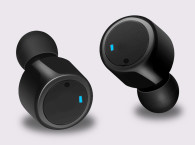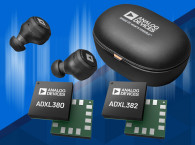
“Widex has always been well-known in the industry for low-power consumption,” says Widex CEO Jørgen Jensen. “Integrating NXP’s NxH2003 means we are able to live up to that reputation while still supporting power-hungry Bluetooth streaming applications. We use less power when streaming 25 percent of the time than any of the comparable hearing aids. Our competitors can’t match that even when they don’t stream.”
 “This announcement reinforces our leading position as a trusted supplier and innovator in the hearing aid industry,” said Chae Lee, senior vice president and general manager of NXP’s secure interface and power solutions business. “Our hearing aid customers demand the lowest energy consumption and smallest footprint while adding wireless streaming and increasing processing power. The NXP NxH2003 meets these conflicting requirements. As NXP has proven with Near Field Magnetic Induction (NFMI) technology, and its MiGLO solutions that enabled truly wireless stereo audio streaming, NXP expects to deploy its industry-leading, low-power BLE audio streaming technology in the adjacent hearables market as well.”
“This announcement reinforces our leading position as a trusted supplier and innovator in the hearing aid industry,” said Chae Lee, senior vice president and general manager of NXP’s secure interface and power solutions business. “Our hearing aid customers demand the lowest energy consumption and smallest footprint while adding wireless streaming and increasing processing power. The NXP NxH2003 meets these conflicting requirements. As NXP has proven with Near Field Magnetic Induction (NFMI) technology, and its MiGLO solutions that enabled truly wireless stereo audio streaming, NXP expects to deploy its industry-leading, low-power BLE audio streaming technology in the adjacent hearables market as well.”NXP’s BLE 4.1 certified solution measures only 7.25mm2 and has industry-lowest receive and transmit power levels of 4mW and 7mW respectively. The NxH2003 forms a total solution for ultra-low power wireless audio streaming as it embeds both an M0 microcontroller (running the protocol stack and application), as well as an embedded CoolFlux DSP (running all of the required audio processing including sample rate conversion and audio [de]compression). Furthermore, this advanced IC is highly integrated and can run directly from a Zinc-Air battery as typically used in hearing aids, which minimizes the number of external components and consequently reduces the volume of the end product.
Technologies and solutions for hearing aids and consumer hearables are converging as both markets share closely related use cases while at the same time facing similar end-user requirements and technology barriers. Both markets strive to design smaller and more comfortable end devices exhibiting longer battery life. Additionally, both hearing aid and consumer hearables companies recognize that users desire more functionality from their devices, ranging from the ability to sync with their phones, for calls, music, and games to biometric measurements for health monitoring.
 NXP offers solutions for both markets. NXP has been providing proprietary NFMI (Near Field Magnetic Induction) technology to the hearing instrument industry for nearly a decade. And at CES 2017, the company debuted its NFMI-based MiGLO solutions with several OEMs (original equipment manufacturers) in smart consumer hearables. The NXP MiGLO platform is designed to enable long battery life, exceptional audio quality and reliable wireless experiences while enabling the development of smarter, smaller and comfortable truly wireless earbuds or hearables.
NXP offers solutions for both markets. NXP has been providing proprietary NFMI (Near Field Magnetic Induction) technology to the hearing instrument industry for nearly a decade. And at CES 2017, the company debuted its NFMI-based MiGLO solutions with several OEMs (original equipment manufacturers) in smart consumer hearables. The NXP MiGLO platform is designed to enable long battery life, exceptional audio quality and reliable wireless experiences while enabling the development of smarter, smaller and comfortable truly wireless earbuds or hearables.www.widex.com | www.nxp.com






